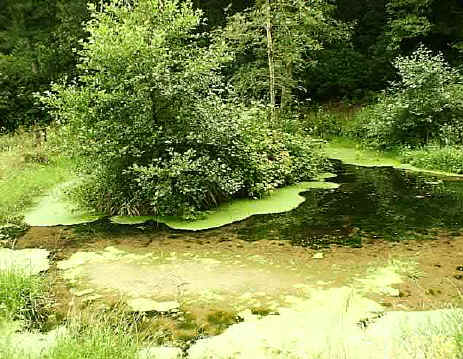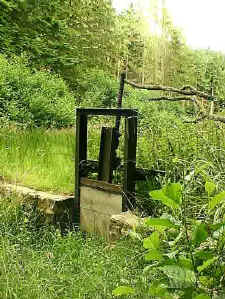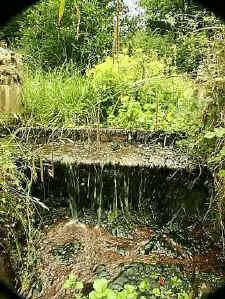Monument Pond
 |
|
| Situated near the northern tip of the reserve, this small pond was created
as part of the Leat Project in 1993/4. Although important itself as a freshwater habitat for plants and animals, it was created as a "sacrificial" pond. This means that because it is upstream of all the other wetland habitats on the reserve, Monument Pond is acts as a "silt trap". Silt and other debris carried down stream by fast moving floodwater has its first chance to settle out when it slows down as it enters Monument Pond. This siltation process in Monument Pond reduces the amount of silt taken further down stream to the other wetland habitats. In effect, this should mean that less work is needed to maintain the wetland habitats down stream of Monument Pond. |
|
 |
 |
| One of two outlets from Monument Pond, the sluice gate is manually
opened or closed to control the flow of water into the stream. During exceptionally wet periods of weather, the sluice can be closed, preventing storm water laden with silt from entering the stream. This helps to prevent the silting up of the valuable wetland habitats to the south. |
The second of two outlets from Monument Pond, the spillway allows water from the pond
to flow into the leat. The flow over the spillway is controlled by opening or closing the sluice gate. During very wet weather, most of the water is diverted over the spillwey. The leat then takes the floodwater safely past the wetland habitats, preventing significant siltation (see map). In the event of a pollution incident upstream contamination of the wetlands can also be reduced by diverting any polluted flow of water over the spillway and into the leat. |